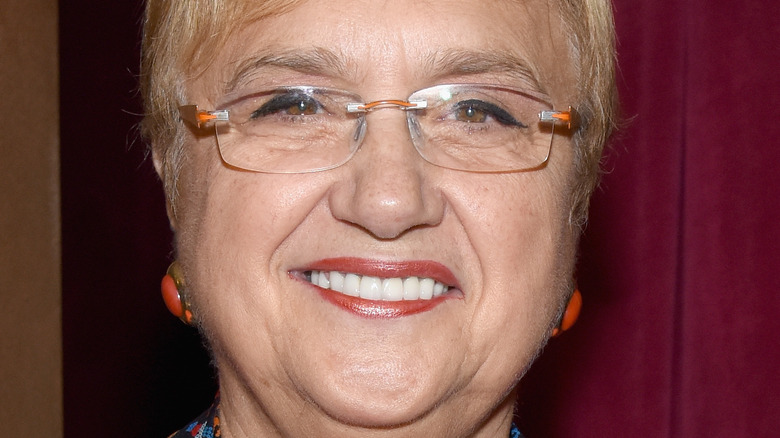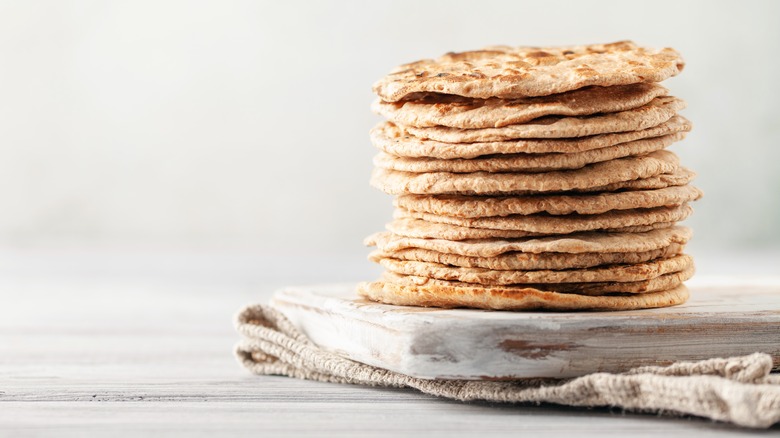Why Lidia Bastianich Finds Flatbread Fascinating
Pita, roti, naan, lavash, matza, chapati, tortillas — whatever you may call it, there's some type of flatbread sitting in your kitchen, and if it's not, it's definitely on your list to grab next time you're at the store. But, despite how integral it is to your go-to cuisines, whether that be the kind you grew up eating at home or ones you've adopted throughout your lifetime, flatbreads typically aren't given much thought. In fact, their sheer simplicity and ample accessibility often make them an afterthought — one that many third, fourth, and fifth-generation U.S. households may even take for granted. Lidia Bastianich, however, is putting a stop to that.
Her latest PBS special, "Lidia Celebrates America: Flavors That Define Us," puts a spotlight on immigrants' journeys to the United States, telling their stories while sharing unique cultural recipes and kitchen traditions — an important one being flatbread. In a personal interview with Tasting Table, the food mogul noted that, throughout her experience filming for the show, she was constantly learning from the first, second, and third-generation Americans she cooked with. However, what she found the most fascinating throughout her travels across the vast U.S. was the universal importance of flatbread.
"There were tacos, or there was the Indian fry. Every culture has some form of flatbread. Along the way, it was interesting to find how the flatbread is made and used at the table," she told Tasting Table.
Flatbread and the immigrant experience
As a refugee herself, Bastianich and her family fled from their home in Istria, Italy (now Croatia), when it became a part of communist Yugoslavia. Living "behind the Iron Curtain," Bastiaich knows all too well the connection to home that food provides. She spent much of her childhood with her grandparents, tending to their farm and the food it produced. To this day, Bastianich uses those foods to reminisce, and it's no secret that her experience is what influenced the PBS special. While flatbread may not be at the center of every Italian table — unless it's focaccia — she recognizes how important it is in other cultures.
In some cultures, flatbread holds historical significance. For example, Jewish people eat matzah on Passover as a commemoration of the Exodus from Egypt. Similarly, Indigenous peoples, namely the Navajo, began eating frybread with the provisions granted to them by the U.S. government after being forced from their ancestral land into internment camps. Just like the flatbreads found in other cultures, these examples are also demonstrations of cooking methods that are unique to them and their traditions.
Similar observations can be made of other types of flatbread — Central American tortillas are made from maize and flattened in a press, while Indian and South Asian naan is made with yogurt or milk and cooked in a tandoor. The list goes on, and it only goes to show that flatbread, like many foods, holds cultural significance in homes around the world.

